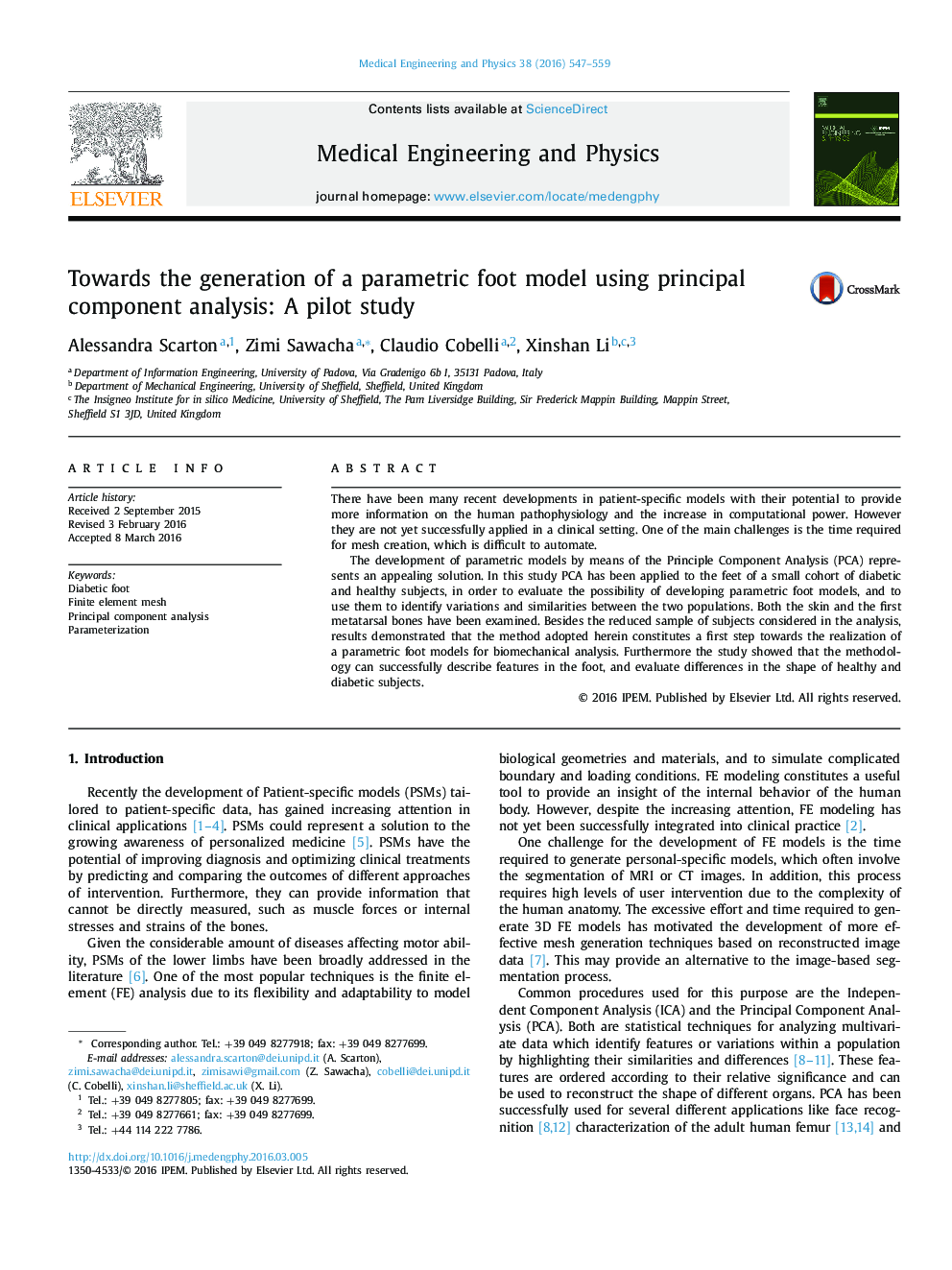| Article ID | Journal | Published Year | Pages | File Type |
|---|---|---|---|---|
| 875662 | Medical Engineering & Physics | 2016 | 13 Pages |
•PCA can reduce the time of mesh creation.•Principal Component Analysis (PCA) can be used for the development of parametric models.•PCA can be applied on foot meshes of diabetic and healthy subjects.•PCA can identify variations and similarities between diabetic and healthy subject foot meshes.•PCA constitutes a first step towards the realization of a parametric foot models for biomechanical analysis.
There have been many recent developments in patient-specific models with their potential to provide more information on the human pathophysiology and the increase in computational power. However they are not yet successfully applied in a clinical setting. One of the main challenges is the time required for mesh creation, which is difficult to automate.The development of parametric models by means of the Principle Component Analysis (PCA) represents an appealing solution. In this study PCA has been applied to the feet of a small cohort of diabetic and healthy subjects, in order to evaluate the possibility of developing parametric foot models, and to use them to identify variations and similarities between the two populations. Both the skin and the first metatarsal bones have been examined. Besides the reduced sample of subjects considered in the analysis, results demonstrated that the method adopted herein constitutes a first step towards the realization of a parametric foot models for biomechanical analysis. Furthermore the study showed that the methodology can successfully describe features in the foot, and evaluate differences in the shape of healthy and diabetic subjects.
